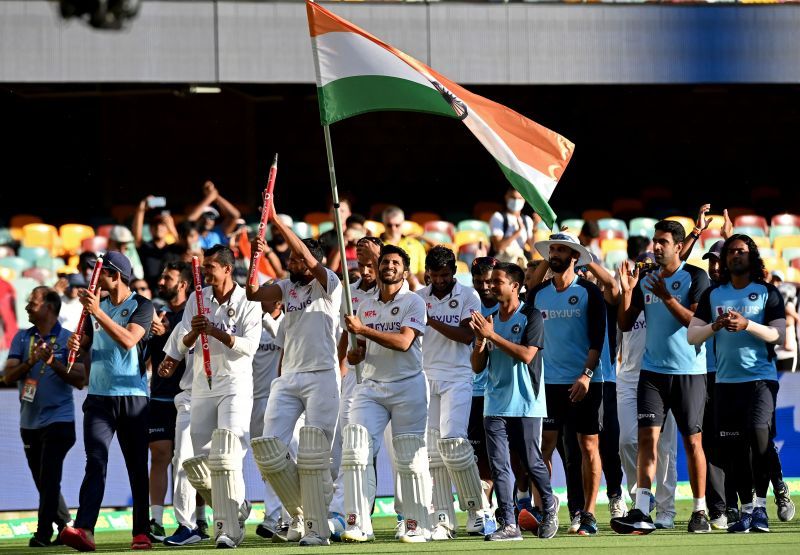
Indian cricket's solid system that ensured resources available didn't lack ammunition

Right after India's landmark series victory on Australian soil back in 2018, Virat Kohli and Ravi Shastri had addressed a press conference. One of the points Virat Kohli spoke about was about managing the fast bowlers and more importantly, he highlighted the need to ensure this was a cultural change more than a seasonal wonder.
"It's important to take care of these guys (pace attack of 2018) especially, manage workloads that's going to be our priority going forward but even more so finding three more guys who can bowl as fast and are as relentless as these guys." Virat Kohli had mentioned.
The process had already begun and he was very vocal about that.
"Which we already are in the process of identifying and keep them ready, you know make them travel with the team and make them understand the importance of Test cricket, what areas to bowl, what the mindset should because once you create this kind of a culture in the team you want it to continue" the Indian captain said in 2018
When he said all this back in 2018, it wasn't something that was said just for the press. It was highlighting the fact that the team understood the need for a fast-bowling system and culture.
The recent results are not an indication of overnight hard work. The effort started a long time back, and it reaped the rewards in one of Indian cricket's most desperate times. There is so much clarity to the words he spoke in that press conference that year and now looking at it in hindsight, the words sink in that much more.
"The effort is all around, even on the outside you need to keep scouting people who can then take that legacy forward and not just end in a season. We are already in the process of identifying how we can extend this legacy and this culture for as long as possible and then setup a system in way that it continues for many more years to come"
These are just some of Kohli's words from that press conference. There is a reason you need to delve deep into these words and find out how they resonate with what India has managed to achieve in Australia in 2021.
Mohammed Siraj finished as India's leading wicket-taker in the recently concluded Border-Gavaskar Trophy. This is his very first series for the Indian Test team. As if it wasn't daunting enough to tour Australia for a pacer with experience, here is a guy that has taken a five-wicket haul at the Gabba in his very first tour.
The value of the first-class system and the India A experiences
At the MCG, on Siraj's debut, the cricket world was astonished by how ready he looked for Test match cricket. This is new to Indian cricket, and for a country that has not seen ready Test match bowlers years into their Test careers, it's exciting to see someone raring to make an impact from the word go.

This is the result of a fantastic system that the BCCI have in place to make sure these talents are streamlined to perfection when they eventually play for India.
Siraj has a first-class average of 23.92, has been a part of India A tours abroad. These bowlers are not overawed by the grandeur of the occasion because they have done it before in a similar set up, just that the level now goes a notch higher.
Siraj was the leader of a bowling attack that had two debutants, and one pacer who had bowled ten balls so far in his Test career so far. This very attack picked up twenty Australian wickets at the Gabba.
Siraj knew the lengths to bowl, he knew the mindset required and he has made it public about how much Test cricket means to him. These are the exact same things Virat Kohli addressed during the press conference back in 2018. Well, here we are.
This is not just about Siraj, though. The likes of Shubman Gill also were able to step in because the batsmen play in these conditions on the same A tours.

A lot of players in the past have had tremendous first-class averages but just haven't been able to crack it in international cricket. The current system provides a solution to his very problem.
Their success is not just limited to the good run in home conditions, as these talents are then taken on India A's tours to ensure they are ready for conditions alien to them. There is no lack of exposure here.
Now, people watching Indian cricket can see the depth in resources in this current crop. The value of a system like this ensures it's not a one-off thing, but more of a cultural change that has started to reap its rewards.